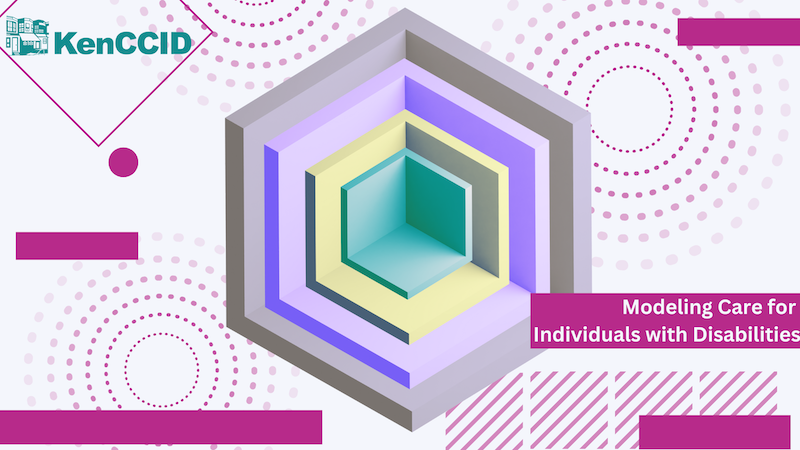Understanding Disabilities
As the New Year continues to unfold, we continue to revisit and redefine the ways in which individuals with disabilities are supported. From being intentional about using inclusive words to creating safe environments, support for individuals with disabilities spans a broad spectrum.
To better describe what disability is and how it is perceived in general society, many models have been developed, namely:
- Medical Model
- Charity Model
- Social Model
- Human Rights Model
Let’s visit each model more closely.
1. Medical Model
In the Medical Model, disability is viewed as a condition to be treated or cured. In this model, an individual with a disability is unable to fully participate in society until that condition has been resolved. Limited and inequitable access to basic medical care means that for many people with disabilities, entry into society remains out of reach.
At KenCCID, access to timely medical care is at the core of the services that we provide.
2. Charity Model
With the Charity Model, individuals with disabilities are viewed as being unable to live independently or to live together with people without disabilities. The infamous Pennhurst Institution is a glaring example of when this model goes too far. Picture children in cages in isolation for their entire lives.
KenCCID was born out of the horrors of Pennhurst. KenCCID took a community approach to housing where individuals with disabilities are encouraged to live independently and to gain employment.
Independence is the ultimate goal of every individual that we welcome here at KenCCID.
3. Social Model
The Social Model is a more progressive view on individuals with disabilities, and instead focuses on removing the barriers that prevent individuals with disabilities from participating fully in society. These barriers fall into 3 general categories:
- Physical – lack of curbs and accessible transportation
- Social – stereotyping and discriminatory hiring practices
- Educational – lack of inclusive teaching styles in the classroom
At KenCCID, we center the individual first. We utilize the Personal Outcome Measures® tool to ensure support and services are truly individual-centered. Then, we address their specific disability using a holistic approach that is unique to their needs.
One size does not fit all at KenCCID.
4. Human Rights Model
According to the United Nations, “under the Rights based model, persons with disabilities are recognized as having the right to equal opportunities and participation in society”. The Human Rights Model takes the Social Model further, by declaring that individuals with disabilities have basic human rights that need to be respected and promoted.
KenCCID’s vision is to ensure that the rights, safety and well-being of the Individuals are protected and observed at all times; utilizing trained professional staff and community resources to enrich and enhance our Individuals’ quality of life.
Our Model of Care
Caring for individuals with disabilities has come a long way. In days past, care felt more like forcing individuals to comply with a strict regimen. This regimen, of course, catered to the interests of the caregivers. At KenCCID, care for individuals with disabilities centers on the interests of the individual.
At KenCCID, we meet individuals with disabilities and their families where they are, and don’t rest until they lead a life that is no different from that of any other.
The New Year brings us a renewed sense of commitment to our mission:
To promote dignity and choice to empower Individuals with Intellectual and Developmental Disabilities to reach their full potential.

